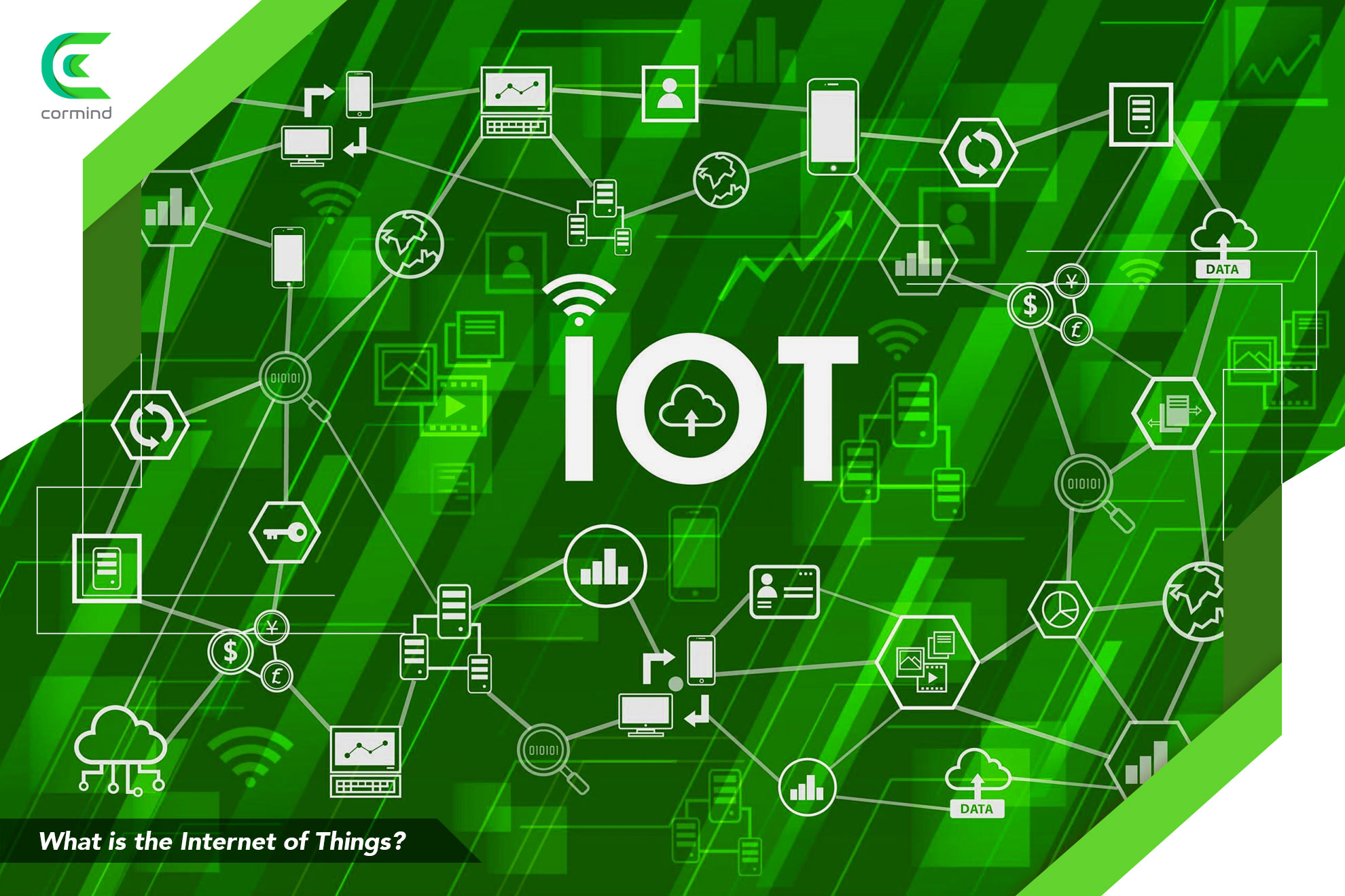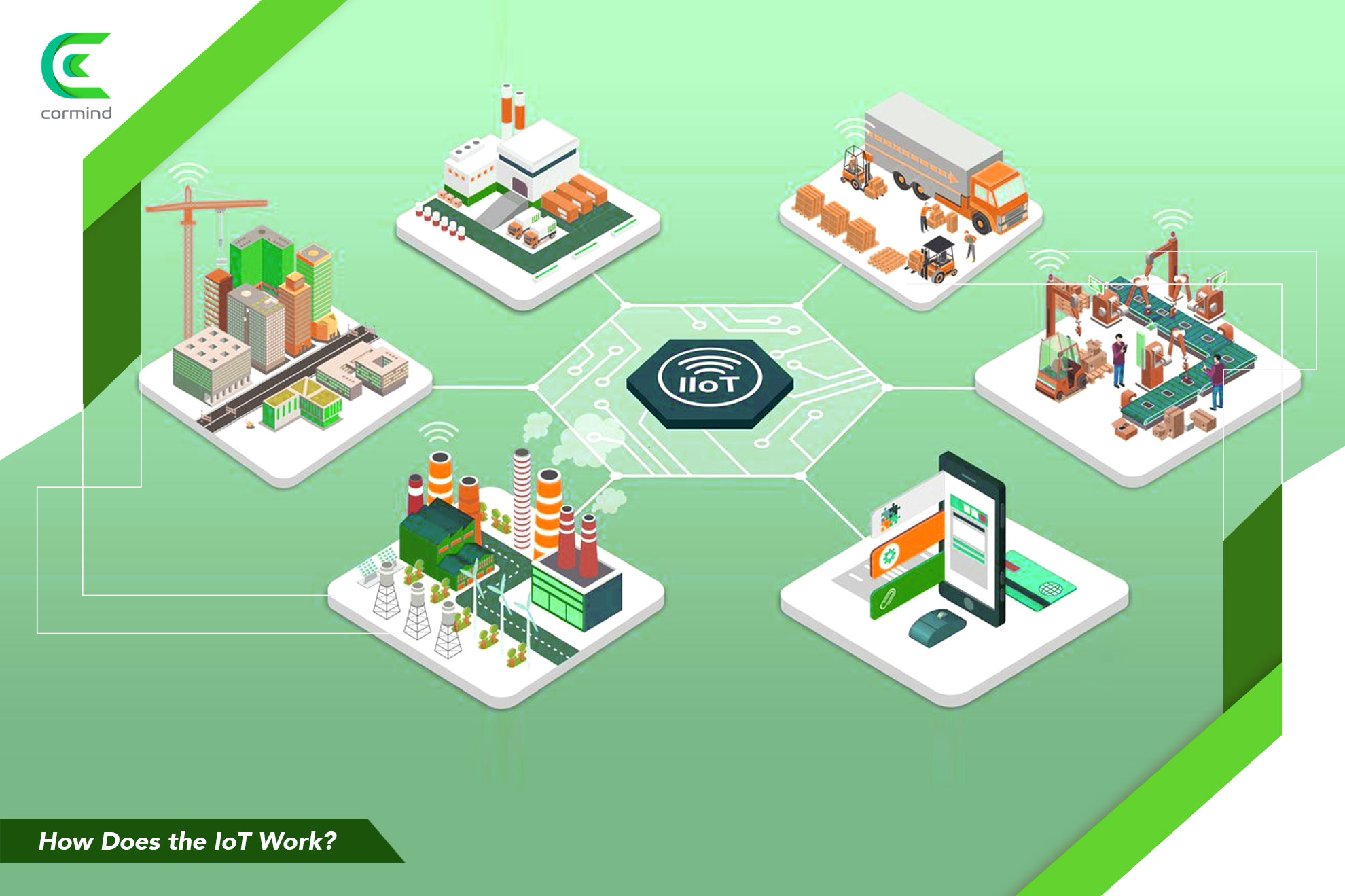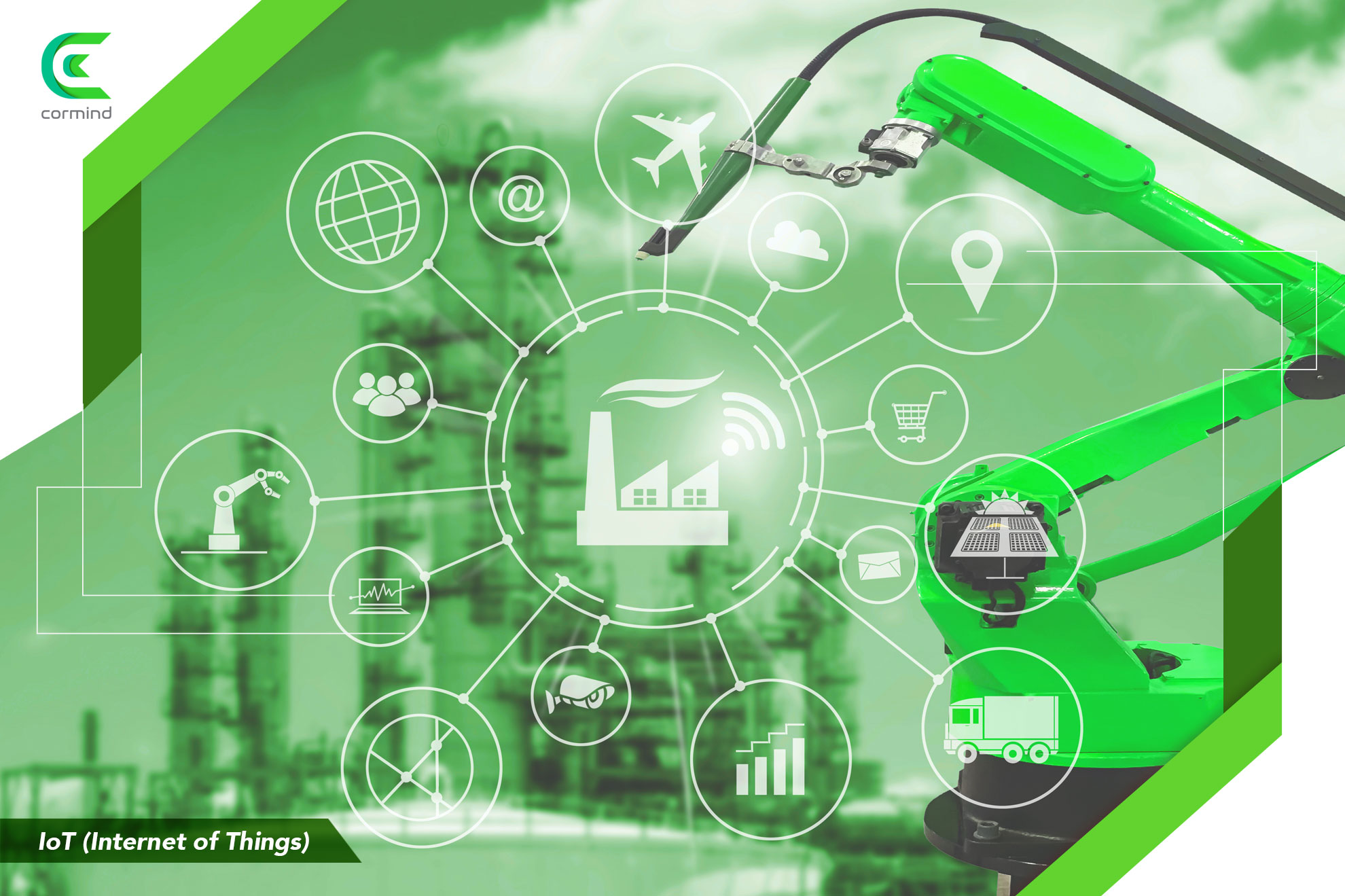The concept of the Internet of Things (IoT) technology is the communication and interaction between smart devices. Nowadays, the Internet of Things covers a wide range of devices, from small household appliances to smart cities. The data generated by these devices is referred to as big data.
In IoT, various devices can be connected to each other and exchange information without human intervention. This enables devices to work together and provides real-time data for monitoring and decision-making purposes. For example, a smart home system can connect to and control multiple devices such as thermostats, lights, and security cameras.
What is the Internet of Things (IoT)?
Systems that transfer data over a network without the need for human-to-human or human-to-computer interaction are referred to as the Internet of Things (IoT). These systems can transfer data by using interconnected computing devices, mechanical and digital machines, objects, animals, or unique identifiers. This eliminates the need for human-to-human or human-to-computer interaction (UIDs).
IoT technology is being increasingly used by businesses across a wide range of sectors in order to improve operational efficiencies, enhance decision-making processes, boost the value of their operations, and get a deeper comprehension of their clientele.
In 1991, while giving a presentation, Kevin Ashton came up with the concept that would later be known as the Internet of Things (IoT). It is a term that refers to the interaction of a number of electric gadgets, such as the wristwatch that you wear on your wrist in addition to other electronic appliances.
For example, the sensors in a wristwatch you wear on your wrist may be able to determine the distance you’ve walked, the number of steps you’ve done, and your heart rate while you’re engaging in these activities. The information that is gathered by these sensors may be examined by a client device, such as a personal computer or a mobile phone, to assist us in better organizing our life. The Internet of Things is made up of its most basic component, which is the communication that takes place between the two different devices.
How Does the Internet of Things (IoT) Work?
An Internet of Things ecosystem consists of web-enabled smart devices that use embedded processors, sensors and communication hardware to collect, send and act on data from their environment.
In other words;
IoT is a network of devices connected through communication technologies to create systems that monitor, collect, exchange and analyse data, providing valuable information that enables industry companies to make business decisions faster.
An industrial IOT system consists of:
- Intelligent entities that can sense, transmit and store information about themselves. That is, applications, controllers, sensors and security components.
- Data communication infrastructure, for example the cloud;
- Analytics and applications and people who generate business knowledge from raw data.
IOT devices share the sensor data they collect by connecting it to an IOT gateway or another edge device from the cloud where the data is sent to the cloud to be analysed locally or analysed locally. Sometimes, these devices communicate with other related devices and act on the information they receive from each other. The devices do most of the work without human intervention, but people can interact with the devices. For example, setting them up, giving instructions or accessing data. The connectivity, networking and communication protocols used with these web-enabled devices largely depend on the specific IoT applications being deployed.
Internet Of Things (IoT) Benefits:
The Internet of Things offers organisations a range of benefits that enable them to
- Monitor overall business processes.
- Enhance the customer experience.
- Save time and money.
- Increase employee productivity.
- Integrate and adapt business models.
- Making better business decisions.
- Generating more revenue.
IOT encourages companies to rethink the way they approach their businesses, industries and markets and gives them the tools to improve their business strategies. One of the most touted benefits is the predictive maintenance of industrial internet businesses provide.
This “involves organisations using real-time data generated from IoT systems to predict faults in machines”, for example, before they occur, before a part breaks down or a machine breaks down, enabling companies to take action to solve these problems.
Another common benefit is improved field services. help field service technicians identify potential problems with customer equipment before they become major issues, enabling technicians to resolve problems before they inconvenience customers.
Asset tracking is another IOT benefit. Suppliers, manufacturers and customers can use asset management systems to track the location and condition of goods along the supply chain. The system sends immediate alerts to stakeholders if goods are damaged or at risk of damage, giving them the chance to take immediate or preventive action to rectify the situation.
IOT ensures greater customer satisfaction. When products are connected to the internet of things, the manufacturer can capture and analyse data on how customers use their products. It enables manufacturers and product designers to adapt future IOT devices and create more customer-centric product roadmaps. IoT also improves plant management. Because manufacturing equipment is sensitive to wear and tear, as well as to specific conditions within a factory, sensors can monitor vibrations, temperatures and other factors that can lead to sub-optimal working conditions.
Internet of Things and Big Data
Today, the Internet of Things extends from small home appliances to smart cities. Of course, the data generated here appears as Big Data. Big data created by making sense of the data used in the Internet of Things and analysing different data is very valuable.
For example; everyone has searched for a parking space in the car park. The signs that are used in car parks today and write “FULL” or “EMPTY” at the entrance are one of the smallest examples of the Internet of Things and the big data that will be generated. The sensors located here detect the vacancy and occupancy rate of the car park. When the rate is analysed with the time of the day; a data is generated that allows us to analyse at which hours the car park is full or empty.
What is Big Data?
Big data is the result of all the digital data in our lives being collected and accumulated in one place. The data here are analysed by people or artificial intelligence and are useful for many of our daily lives.








